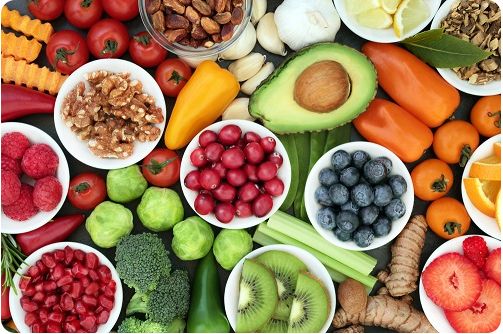How Can You Differentiate Between Healthy and Unhealthy Foods?
Well, consuming wholesome foods can boost your immune system, keep your weight in check, keep your energy levels high, and guarantee your overall physical, mental, and emotional well-being. However, unhealthy diet can also make you gain weight, contribute to health problems, and shorten your lifespan. To maintain your strength and fitness, you must adopt a healthy eating plan. So how can you know which foods are healthy and which are not? Here is a specific example to assist you!
What are Healthy and Unhealthy Foods?
We must first comprehend what it implies in order to understand how to distinguish between healthy and unhealthy foods.
Food that is high in nutritional value and promotes the general health of your body’s systems is referred to as healthy food. A balanced, healthy diet consists of the following four food groups:
- Fruits and Veggies
- Meat
- whole grains
- Dairy
You must incorporate these foods into your diet and prepare them properly. You may receive the essential elements, such as carbs, proteins, vitamins, and minerals, in the right amounts by using the proper cooking techniques.
Unhealthy food – Food items that have more calories, bad fat, and other additives but less of the essential nutritional content are referred to as unhealthy food. Foods that are processed, quick, fried, etc. are unhealthy foods.
Not all fats are harmful. It is crucial to understand the distinction between healthy and bad fats. Monounsaturated and polyunsaturated fats have a good impact on your body’s cholesterol levels. They raise levels of HDL, or high-density lipoprotein, and lower levels of LDL, or low-density lipoprotein, or bad cholesterol, respectively. On the other hand, trans fat, which is found in foods like microwave pizza, popcorn, and baked goods like cake and cookies, and saturated fat, which comes from full-fat dairy products, red meat, etc.
Read Also: 6 Eating Practices That Boost Fat Burning
How to Differentiate Between Healthy and Unhealthy Foods?
Examining the following traits will help you distinguish between healthy and junk food:
Facts about nutrients are quite important. The most crucial nutrients are listed here, along with a brief explanation of what nutritious meals include each one.
- A crucial source of energy for the body, carbohydrates make up between 40% and 60% of your diet. Brown rice, bananas, potatoes, chickpeas, almonds, sweet potatoes, oranges, apples, berries, beets, brown bread, and other foods are high in carbohydrates.
- Protein should make up 15–25% of your diet since it helps the body regulate cellular function. Eggs, almonds, oats, broccoli, tuna, yoghurt, whole grains, milk, and other foods are high in protein.
- The body needs fats to release energy, absorb vitamins, and regulate body temperature.
It need to make up 10–20% of your diet. It would be preferable to introduce fats gradually because they can, over time, raise both good and bad cholesterol. Avocados, whole eggs, fatty salmon, almonds, chia seeds, and other foods are examples of foods that contain healthful fat.
A minimum of 14g of fiber per day should be consumed for healthy digestion. Oats, bananas, dark leafy vegetables, walnuts, potatoes, apples, carrots, avocados, green peas, popcorn, lentils, and many other nutritious foods are high in fiber.
By assisting cellular processes, vitamins and minerals are responsible for growth and development. Numerous types of vitamins work in your body in a variety of capacities. Additional sources of these vitamins include
Salmon, carrots, and cod liver oil are all sources of vitamin A.
Green vegetables, seafood, and milk all contain vitamin B.
Oranges, strawberries, kiwis, and papaya all contain vitamin C.
Contains vitamin D: mushrooms, cheese, eggs, and milk
Vitamin K: Spinach and lettuce
Fish, beans, red meat, lentils, and other nutritious meals high in minerals are also available.
To create a balanced and nutritious meal plan throughout the day, you should make sure that these nutrients are present when you prepare or purchase food items. Because unhealthy meals lack the proper ratio of essential nutrients, they raise the risk of developing a number of ailments.
Read Also: 5 Eating Mistakes That Prevent You From Losing Weight
Benefits to your health: Efficient body functions are necessary for growth and development as well as to reduce weariness, heart difficulties, muscle and joint discomfort, and exhaustion. On the other hand, eating unhealthily can raise your risk for diabetes, obesity, cardiovascular disease, and other conditions.
Foods that are healthy cannot necessarily be more delicious. They require less preparation because they are available in their natural state. Contrarily, unhealthy foods are quite tasty and may be prepared in a variety of ways, using things like oil, spices, etc.
Cost: Eating healthy meals requires a lot of work to reap their full health advantages. For instance, compared to unhealthy diets, the expense of maintaining farm-fresh, organic vegetables and fruits is significant.
Approachability – Compared to unhealthy foods, healthy foods are less popular and less readily available on the market. For instance, it is simple to find fast-food restaurants whereas it is challenging to locate a location serving wholesome salads and soups.
It is preferable to recognize the distinction between healthy and unhealthy food and to select the former. In addition, a lot of people have turned to wise financial choices and good living habits to safeguard their future, particularly in the event of a pandemic.
To assist customers in stabilizing their financial situations, insurers have launched comprehensive life insurance products. A life insurance policy with savings benefits can protect your family’s future and ensure satisfaction in your daily routine, just as nutritious food can contribute to calm living.
Conclusion
To achieve optimum health, it is crucial to distinguish between healthy and bad eating habits. The nutrient content, flavor, cost, and health effects of healthy and unhealthy foods vary. For the finest long-term results, you must conduct appropriate study on the food products prior to purchase and throughout preparation. Plan to integrate a balanced eating regimen as a result for a happy and healthy live!
